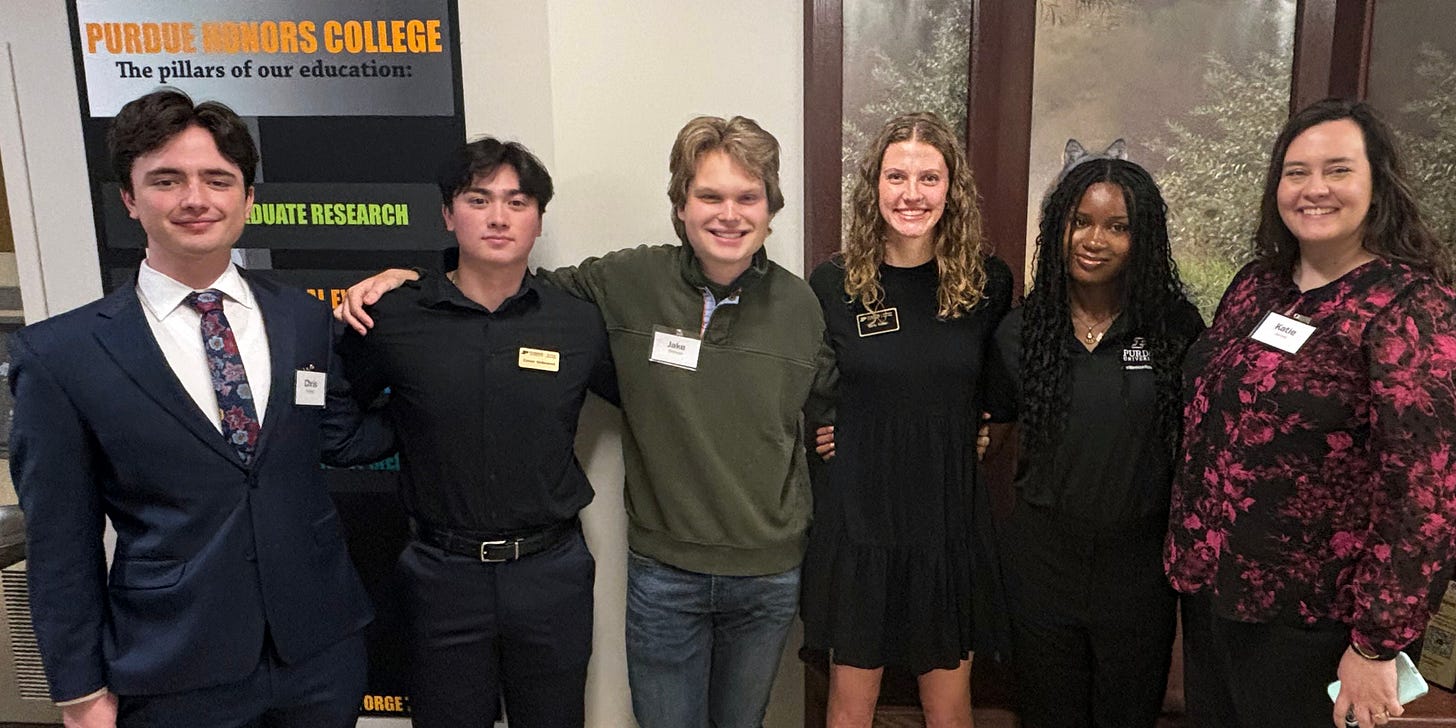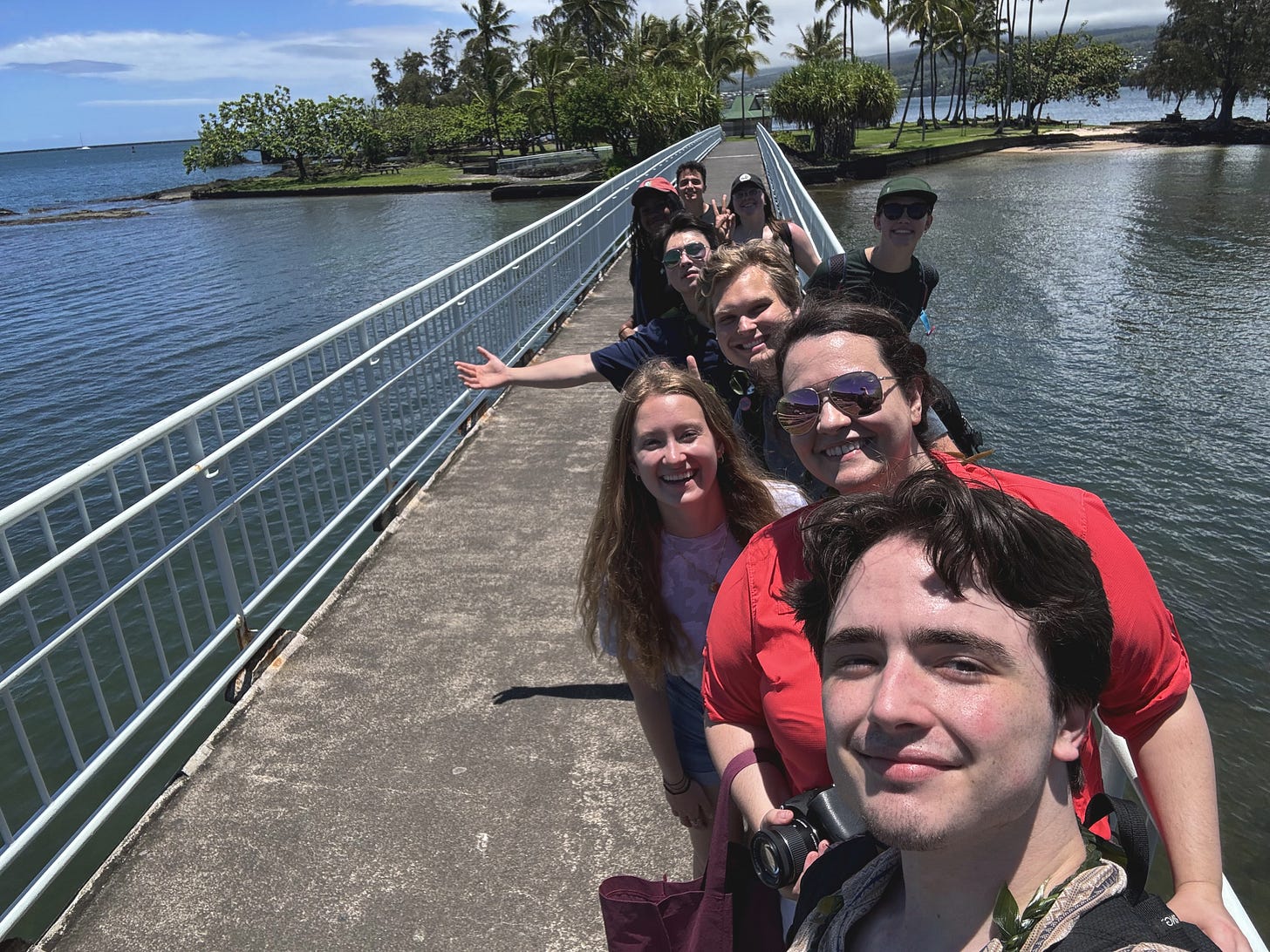Dr. Katie Jarriel is a computational archaeologist and Clinical Assistant Professor in the John Martinson Honors College at Purdue University. Her research focuses mainly on the Aegean Bronze Age, and Project oCEANIC represents her first foray into the Pacific.
How it all started
During a workshop at Stanford University in December 2022, I co-hosted a session titled Disaster, Risk, and Resilience. In our wide-ranging conversation on the topics of environmental disaster, adaptation, we realized that while the communities that we studied varied in terms of geographical location, time period, and cultural context, there were poignant similarities in the challenges that small island communities face. Among the participants of this session were Dr. Joe Genz of the University of Hawai’i at Hilo, three of his students, Shania Tamagyongfal, Jerolynn Myazoe, and Tromainne Joab. We were also joined by navigators Larry Raigetal, the project coordinator of Waa’gey and faculty at the University of Guam, and Alson Kelen, director of Waan Aelon in Majel.
For my part, talking with Larry and Alson illuminated many practical aspects of seafaring that, from my perspective as someone who studies people living 5,000 years ago, have been lost in the archaeological record. While all the caveats of different time period and cultural context apply, having the chance to learn from present-day practitioners helps generate so many ideas for how to address questions about the past.
Joe and the Hawai’i team had been working on documenting oral histories from elders and navigators from Yap and the Marshall Islands, and during this session, they were intrigued about the possibilities of computer modeling for accessing the deeper past.
It was only natural to team up and tackle these questions together.
Participants of the inaugural CAST Workshop at Stanford University in December 2022.
Who we are
Project oCEANIC, which stands for Computing Environmental Adaptation and Navigation in Island Communities, began with the goal of supporting on-going research on traditional navigation in the Federated States of Micronesia and the Marshall Islands. These small islands are among the places in the world most affected by climate change. During COVID-19, they experienced disruptions in global supply chains. Finally, they face the ongoing challenge of sustaining traditional practices in the face of colonial histories and environmental degradation. The past offers a source of knowledge for how people living in these areas maintained connections and adapted to environmental challenges.
However, accessing past seafaring poses a challenge. Project oCEANIC approaches this challenge through the power of computer modeling. The idea is that we can simulate what a past voyage might have looked like using environmental and archaeological data, and by running many simulations gain an understanding of the decisions that past people may have made, the challenges they faced, and how they overcame them.
In 2023, I received a Breakthrough Award from the John Martinson Honors College at Purdue University. This allowed me to assemble a team of eight undergraduate Honors students from a variety of backgrounds and majors. Since January 2024, the team has been researching traditional Yapese and Marshallese seafaring and building a model to simulate navigation.
Select members of the Project oCEANIC research team at an awards ceremony in April 2024. From left to right: Chris Farber, Connor Underwood, Jake Dorson, Marlo Weber, Danielle Ejiogu, and Katie Jarriel.
Where we’re going
In May 2024, the whole team traveled to the University of Hawai’i at Hilo to meet with our collaborators. We’re here for two weeks to get feedback on the research we’ve done so far so that we can continue to refine the model. We also have the unique opportunity to ask questions of graduate and undergraduate students at Hilo who are embarking on their own fieldwork over this summer and who can bring our questions directly to community elders. We’re also here to learn about the culture and environment of Hawai’i and the history of traditional navigation, so we’ve got lots of excursions planned during our jam-packed itinerary.
This trip is generously made possible through funding from the JMHC Breakthrough Award. Joe and the students at Hilo have welcomed us to their community and facilitated many of the activities we’ll be doing.
After Hawai’i, it’s back to the drawing board to revise and refine our model and begin running simulations from different time periods. But for now, we’re making the most of our time on Big Island.
The team lands at Hawai’i! The whole team on the footbridge to Moku Ola (Coconut Island) in downtown Hilo. From front to back: Chris Farber, Katie Jarriel, Allyson Dinwiddie, Jake Dorson, Connor Underwood, Marlo Weber, Danielle Ejiogu, Hannah Stegall, and Gio Stabile.
Learn More
The workshop where this all began was the Computational Archaeology and Seafaring Theory (CAST) community’s inaugural gathering, which brought ocean scientists, archaeologists, anthropologists, and practitioners from around the world together. Read more here.
Dr. Joe Genz and Dr. Alex Mawyer (University of Hawai’i at Manoa) received a NOAA Adaptation Sciences grant to fund graduate students from the Federated States of Micronesia, Hawai’i, and the Marshall Islands to conduct research with their home communities to develop community-based solutions to on-going challenges.







